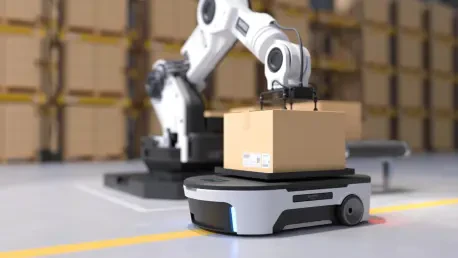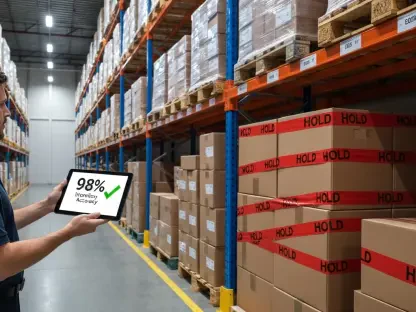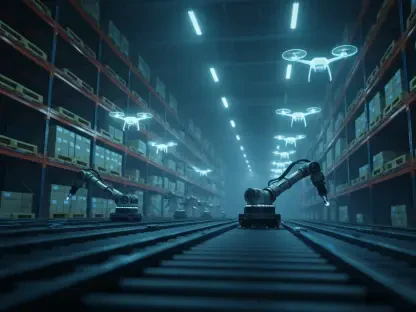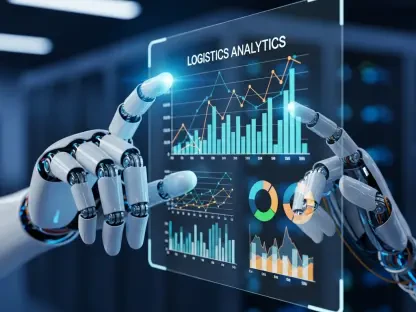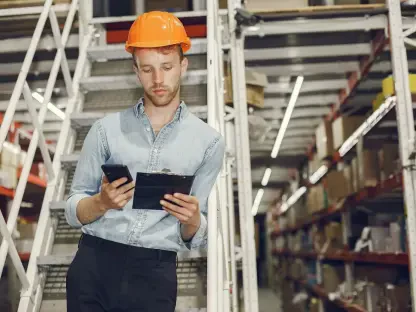The relentless pace of technological development means warehouses and distribution centers are witnessing unprecedented transformations, with AI and robotics technologies now central to their operations. These innovations, which were once the realm of science fiction, are today reshaping inventory management and material handling processes. Their ability to streamline workflows, improve precision, and enhance productivity is putting traditional methods to the test. This article delves into how the fusion of AI and robotics is revolutionizing these operations, ultimately driving industry efficiency and setting new standards for productivity.
Advanced Robotics Enhancements
In recent years, the integration of AI-powered drones into warehouse operations represents a seismic shift in inventory management practices. Known as the Corvus One Autonomous Inventory Management System, this pioneering development by Corvus Robotics employs drones that perform automated stock checks under challenging conditions such as darkness or refrigeration. The drones glide effortlessly through these environments, employing cutting-edge computer vision and AI technologies to ensure precision in identifying discrepancies. This autonomous navigation contrasts starkly with manual methods, significantly elevating accuracy while minimizing human intervention. As businesses strive for efficiency, these robots are proving instrumental, freeing up human resources to concentrate on strategic tasks rather than routine checks.
Similarly, material handling systems are experiencing a dramatic makeover with Seegrid’s Autonomous Buffer Management. Employing Lift Autonomous Mobile Robots (AMRs), this innovative approach optimizes buffer management by organizing staging areas. This optimization reduces bottlenecks, which translates into smoother workflow and heightened efficiency. By integrating seamlessly into existing setups, these mobile robots don’t just enhance automation; they redefine labor roles, allowing humans to engage in more value-generating activities. Such advancements highlight a shift towards more intelligent and less labor-intensive systems, which in turn reflect a broader trend in industry transformation.
AI-Driven Optimization Solutions
Further advancements in warehouse management are encapsulated in Zebra Technologies’ Zebra Symmetry Fulfillment system. Using AMR-assisted picking technology, Zebra has elevated the art of precision and productivity in warehouse operations. This system integrates wearable technologies and Team Intelligence, efficiently coordinating human-worker interactions with robotic processes. The synergy between humans and AMRs ensures meticulous handling of items, achieving greater pick density and throughput while trimming down operational expenses. As global commerce becomes increasingly competitive, such systems offer invaluable efficiency enhancements, underlining the necessity of adopting advanced technologies to stay ahead.
Additional breakthroughs come from OnRobot with the VGP30 vacuum gripper, tailored for handling heavy payloads. Unlike its electric counterparts, the VGP30 is air-driven yet can adeptly manage up to 30 kg. Its versatile grip configuration facilitates efficient handling while retaining low noise levels, minimizing the consumption of compressed air. With its incorporation into OnRobot’s centralized platform, it offers an accessible solution for companies aiming to optimize material handling processes cost-effectively. These innovations demonstrate how robotics can deliver robust solutions to heavyweight challenges, providing options often inaccessible with traditional systems.
Heavy-Duty Robotic Solutions
Heavy-duty applications require distinct solutions, such as those offered by Fanuc America’s M-950iA/500 robot. Designed to excel in tasks like palletizing and lifting, the robot estimates operational accuracy by adapting to confined spaces and intricate material handling needs. Its ability to manage significant payloads up to 500 kg under external forces demonstrates its versatility in precision-driven scenarios. Such adaptable designs allow businesses to tackle complex and demanding operations, reinforcing the importance of investing in specialized robotic systems for industry-specific challenges.
Moreover, Universal Robots’ collaboration with NVIDIA has led to the creation of the AI Accelerator, which supports collaborative robot solutions known as cobots. This toolkit enhances functionalities such as pose estimation and path planning, streamlining AI application development and deployment. The AI Accelerator significantly reduces the risks and time associated with introducing AI-based robotics innovations, encouraging swift adaptation and fostering progress within the industry. Its application in diverse scenarios showcases how technology partnerships can push the boundaries of robotic capabilities and drive meaningful industry advancements.
Embracing Technological Transformation
In today’s rapidly evolving technological landscape, warehouses and distribution centers are undergoing significant transformations, largely driven by the integration of AI and robotics. These advanced technologies, once viewed as elements of science fiction, are now fundamentally altering the ways inventory and material handling are managed, creating a new paradigm. The capabilities of AI and robotics to optimize workflows, enhance accuracy, and boost productivity are challenging and reshaping traditional methods. No longer just futuristic concepts, they are setting a new bar for efficiency and effectiveness in the industry. This article explores the profound impact of AI and robotics on warehouse operations, detailing how they are revolutionizing processes, driving industry efficiency, and establishing new benchmarks for productivity. As these technologies continue to advance, they promise even greater innovations in the future, offering the potential to redefine what peak performance in warehouses and distribution centers looks like.
